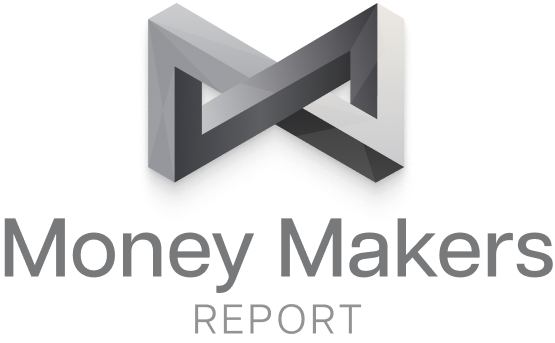Stablecoin adoption is increasing rapidly. Data from research firm rwa.xyz shows the number of addresses holding both dollar and crypto-pegged stablecoins has increased by 15% in 2024, which is the highest to date.
New research from blockchain analysis firm Chainalysis further found the growing prominence of stablecoins in overall on-chain transaction activity. Chainalysis’ “Crypto Spring Report” noted that stablecoins are becoming a true, global asset.
4/ Stablecoins offer anyone with an internet connection a gateway to the USD, unlocking new pathways of financial inclusion. The US leads in purchases, but global demand is high, with $40B+ purchased in March alone across diverse nations and regions. pic.twitter.com/AyOxVypS9j
— Chainalysis (@chainalysis) April 25, 2024
Stablecoins Are Becoming More Important
Kim Grauer, Director of Research at Chainalysis, told Cryptonews that by comparing fiat purchases of stablecoins between countries, it’s clear that stablecoins are growing in importance.
“With a diverse representation of nations and regions–most notably the EU, Turkey, and Thailand–contributing to over $30 billion in purchases in January 2024 alone, and the high share of all transaction volume on-chain, it’s hard to ignore stablecoins’ prominence,” said Grauer.
According to Grauer, stablecoins—cryptocurrencies with values pegged to an external reference, like the U.S. dollar—have recently represented over half of all on-chain transaction volume.
“This was collected via the on-chain data that Chainalysis ingests,” added Grauer.
Andrew O’Neill, Managing Director and Co-Chair of S&P Global’s Digital Assets Research Lab, told Cryptonews that he also believes stablecoins are rising in importance.
“Money doesn’t move at the same speed as information does,” said O’Neil. “On-chain capabilities can help solve this challenge, and right now, stablecoins have emerged in the absence of other tools like central bank digital currencies.”
Stablecoin Use Cases Push Adoption Forward
O’Neil added that recent findings from credit rating firm S&P Global show stablecoins could become a key pillar of financial markets’ blockchain adoption by serving as a digital currency for fully on-chain payments.
“Investment group Blackrock’s BUIDL fund provides a recent use case,” he pointed out. “The tokenized fund, which uses the Ethereum blockchain and invests in U.S. treasuries, has a liquidity pool denominated in the USDC stablecoin, for which investors can redeem share tokens via a smart contract, instantaneously.”
Stablecoins are indeed proving to be a critical bridge between traditional finance and cryptocurrency. Data shows that the stablecoin market is currently valued at about $150 billion, which is expected to exceed $2.8 trillion by 2028.
I’m delulu for a bull case
If we all think about it hard enough, maybe we can manifest it
Naur… let the numbers show you
1. Stablecoins are at an ATH since the bear of June 2022
Yes, they’re not at an ATH in general. Don’t come for me.
But this is a healthy indicator… pic.twitter.com/gMI8OwvMfy
— Beba (@Web3Wand) April 26, 2024
The stablecoin market has also grown more competitive. For example, XRP issuer Ripple recently announced plans to launch a United States dollar-backed stablecoin.
A Ripple spokesperson told Cryptonews that bringing a trusted USD-backed stablecoin to the XRP Ledger will generate more use cases, liquidity, and opportunities for developers.
“Ripple will leverage the stablecoin in its own payments solution to provide customers with the best payment experience, taking into account the region, time constraints, and associated fees,” the spokesperson said.
The spokesperson added that pairing the new stablecoin with XRP will enable more crypto liquidity to service additional cross-border payments demand.
“This will enable critical on/off ramps and support global scale,” the spokesperson said. “Ripple’s payment solution has already processed more than $50 billion in lifetime volume and has payout capabilities in 80 markets, which represents more than 90% of the daily FX market.”
Stablecoins Provide Access to U.S. Dollars
This is important, as stablecoin use cases such as this also promote dollar dominance since they increase access. Research from S&P Global shows that most USD-pegged stablecoins are actually issued outside of the U.S.
“More stablecoin use cases are related to cross-border payments and on/off ramping relative to crypto,” said O’Neil.
To put this in perspective, O’Neil mentioned that PayPal’s stablecoin, PYUSD, is often used to facilitate payments and cross-border transactions in Latin America and the Caribbean.
“The other aspect for stablecoins is remittances,” O’Neil added. “Tether is used heavily to send U.S. dollars to family and friends in emerging markets.”
It’s also worth mentioning that data from CoinGecko found that U.S. Dollar-backed stablecoins represent a 98.9% share of the stablecoin market.
David Pope, Commissioner of The Wyoming Stable Token Commission, told Cryptonews that the global demand for dollars is strong, and stablecoins simplify and speed the transfer of ownership of those dollars.
“This is why stablecoins are becoming a true, global asset class,” Pope said.
Growing Focus For Stablecoin Legislation
The growing demand for stablecoins has also caused lawmakers to focus on stablecoin legislation.
In an April 17 announcement, United States Senators Kirsten Gillibrand and Cynthia Lummis introduced legislation establishing a regulatory framework for payment stablecoins.
“Passing a regulatory framework for stablecoins is absolutely critical to maintaining the U.S. dollar’s dominance, promoting responsible innovation, protecting consumers and cracking down on money laundering and illicit finance,” Senator Gillibrand noted.
The Lummis-Gillibrand Payment Stablecoin Act also notes it would “protect consumers by requiring stablecoin issuers to maintain one-to-one reserves and prohibiting unbacked, algorithmic stablecoins.”
S&P Global Says US Stablecoin Adoption Could Soar Following New Rules
S&P Global highlighted how the Lummis-Gillibrand Payment Stablecoin Act could lead to a surge in U.S. stablecoin adoption due to the regulatory framework boosting confidence. The act aims to provide a… pic.twitter.com/LAynaDNfCt
— Maira.Cruz.Gomes (@Mairetinha) April 25, 2024
In addition to The Lummis-Gillibrand Payment Stablecoin Act, United States House Financial Services Committee ranking member Representative Maxine Waters suggested in an April 24 interview with Bloomberg that lawmakers were progressing toward passing stablecoin legislation.
During the interview, she noted that she had been working “very well together” with committee chair Patrick McHenry on legislation on stablecoins and clawbacks for banks.
Stablecoin Legislation May Drive Adoption
While such legislation would likely prohibit algorithmic stablecoins like TerraUSD (UST) – which depegged from the U.S. dollar in 2022, O’Neil believes that approving a stablecoin bill in the U.S. would accelerate institutional blockchain innovation.
“A clear federal framework would provide more comfort for institutions using stablecoins,” he said. “This may also give banks comfort to issue stablecoins themselves, which in turn may bring banks into the stablecoin market.”
Ripple’s spokesperson also believes that now is the time for clear and definitive regulations on stablecoins.
“The U.S. needs to assert its leadership to provide businesses and banks with the certainty required to proceed,” the spokesperson said. “Without this, the U.S. risks moving technological innovation and user benefits overseas.”
They added that Ripple is still in the process of reviewing how this legislation may impact its business. Yet, they noted, “It’s clear that a stablecoin bill represents a significant step.”
While this may be the case, Chainalysis Head of North America Policy Jason Somensatto told Cryptonews that Chainalysis believes the passage of such legislation will have little impact on stablecoin adoption in the U.S.
Somensatto added that stablecoin adoption is thriving globally despite the lack of an independent stablecoin-specific regulatory regime in the U.S.
“This is likely because of the use case of stablecoins,” he said. “By giving anyone in the world with an internet connection access to the stability of the U.S. dollar, stablecoins are a crucial solution for residents of countries facing currency volatility, both for preserving savings and even facilitating commerce.”
Given this, Somensatto believes stablecoins will still rise as a global asset regardless of regulations.
“While major cryptocurrencies like Bitcoin and Ether tend to dominate the headlines and offer gains that stablecoins lack, stablecoins have surpassed all other types of cryptocurrencies in usage, representing over half of all transaction volume in recent months,” Somensatto noted.
The post Data Indicates Stablecoins Are Becoming A Global Asset Class appeared first on Cryptonews.

